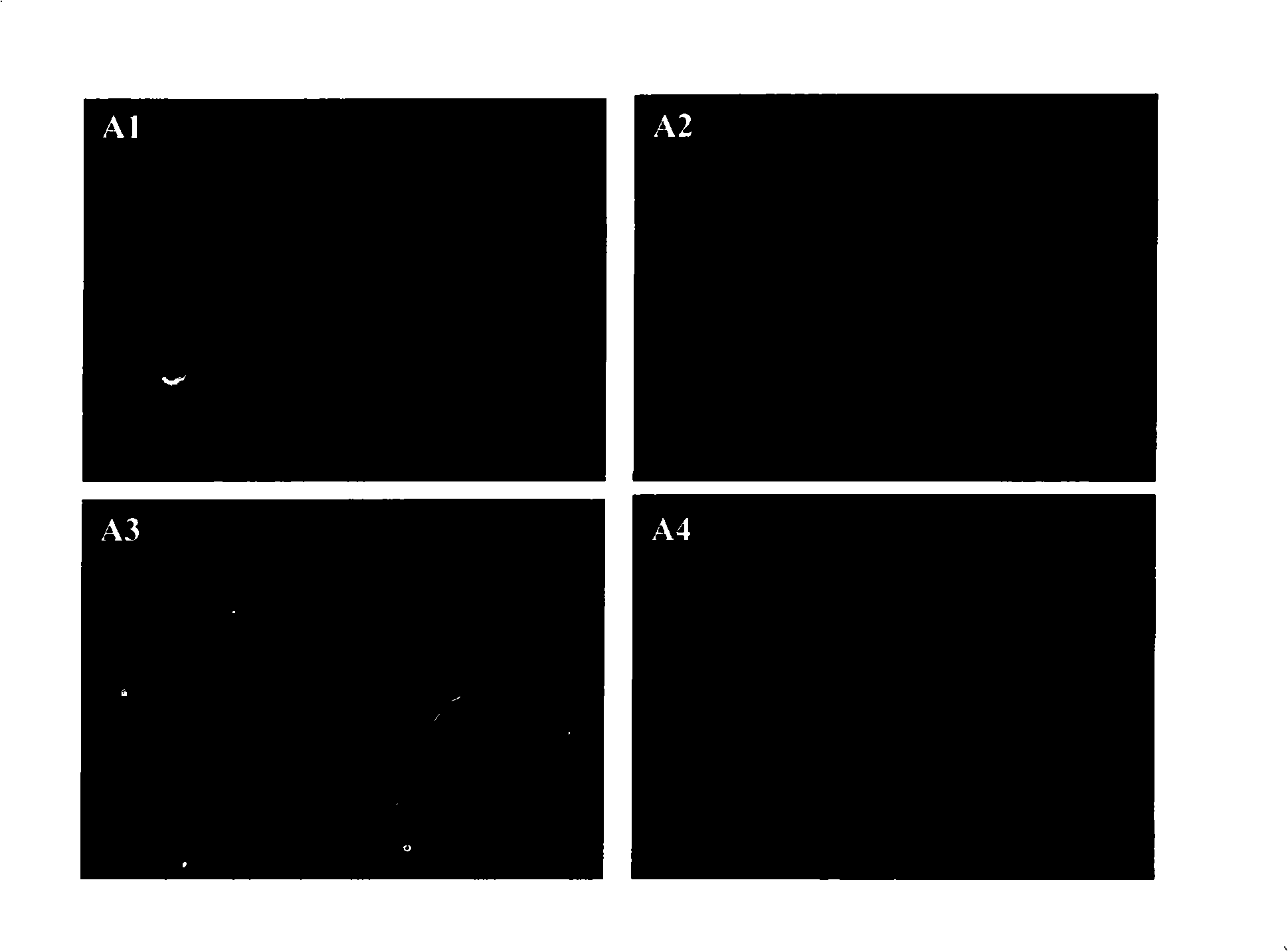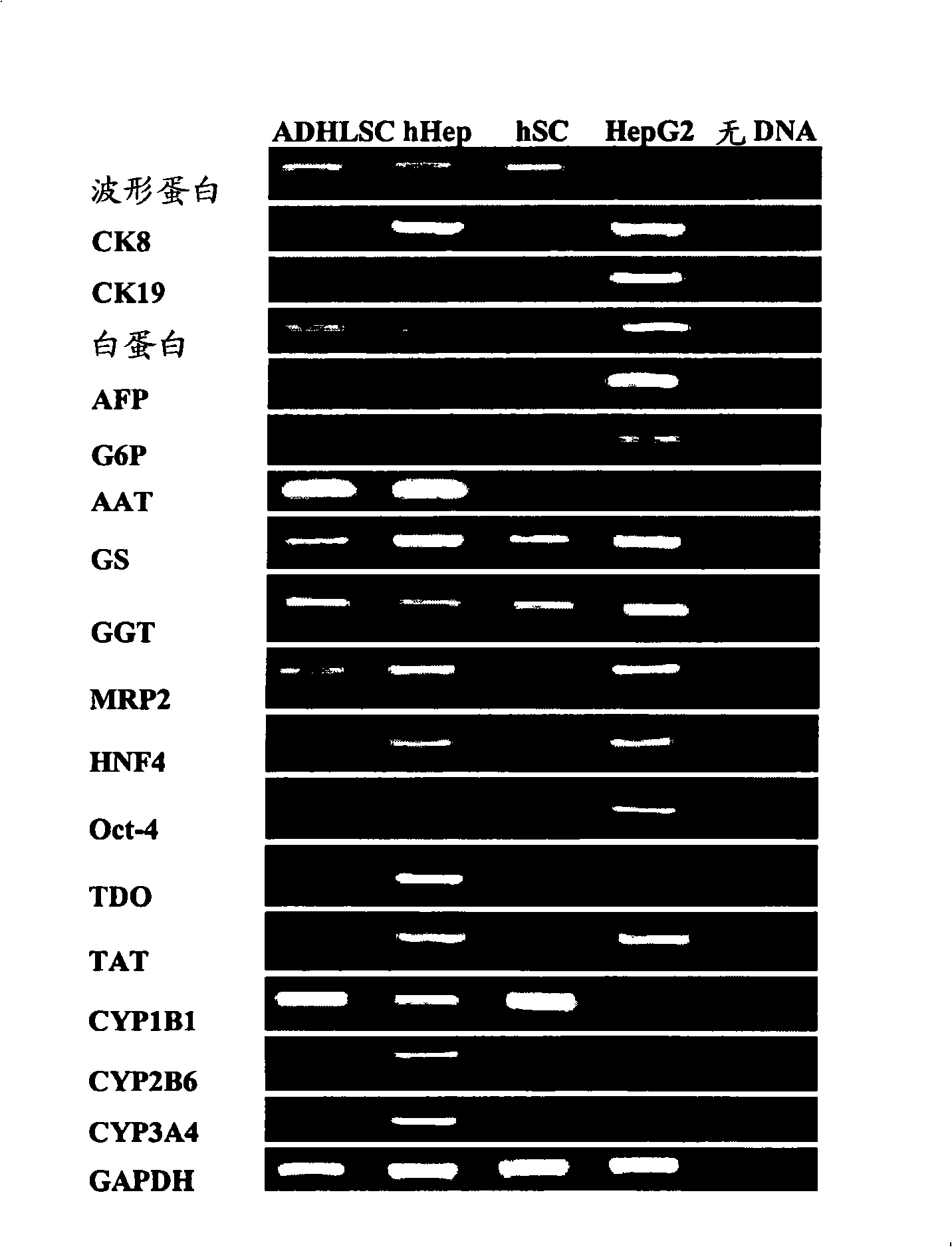Isolated liver stem cells
A technology of liver progenitor cells and stem cells, applied in the field of liver failure
- Summary
- Abstract
- Description
- Claims
- Application Information
AI Technical Summary
Problems solved by technology
Method used
Image
Examples
Embodiment
[0295] Liver Cell Isolation Method
[0296] Human liver cells were obtained from whole livers or liver parts from healthy cadavers or beating donors. Cells were isolated after the total blocking time (eg, 6 to 12 hours after the total blocking time), and livers were kept on ice in the University of Wisconsin medium until perfusion. Hepatocytes were isolated using a classical two-step perfusion technique {Seglen, 1976} {Stephenne, 2005}. The liver tissue was then treated with EGTA solution (Earl's Balanced Salt Solution, without Ca ++ and Mg ++ , 0.5 mM EGTA, 5 mM Hepes, 2 mg / l gentamicin and 100,000 IU / l penicillin G) and digestive enzyme solutions were perfused at 37° C. for 9 to 12 minutes each. Digestion solution (EBSS with Ca ++ and Mg ++ , 5mM Hepes, 2mg / l gentamicin and 100,000IU / I penicillin G) containing 0.9 mg / ml collagenase P and 0.03 mg / ml soybean trypsin inhibitor. The liver capsule was cut and the hepatocytes released with gentle shaking. Digestion was term...
Embodiment 2
[0349] A liver-derived progenitor or stem cell of the present invention, a cell line and / or cell population comprising said progenitor or stem cell (in particular, including but not limited to, the LMBP 6452CB line), or a progeny thereof (any (optionally genetically engineered) can be as follows.
[0350] Infuse cells by continuous injection, preferably no more than 25 to 50 x 10 6 cells / kg, preferably with an interval of 4 hours, or an interval of 8 hours, or more than 8 hours up to 1 week, or more than 1 week. Inject 250×10 for several days 6 cells / kg, or 500×10 6 cells / kg of total cells, preferably one week or preferably two weeks. Repeat the series of injections as needed, every other month, or every six months, or every other year or longer.
[0351] Surgical insertion into any vessel draining to the portal vein (preferably the inferior mesenteric vein or vein) into the portal vein by direct puncture. The catheter can be left in place for hours, preferably days, pre...
PUM
 Login to View More
Login to View More Abstract
Description
Claims
Application Information
 Login to View More
Login to View More - R&D
- Intellectual Property
- Life Sciences
- Materials
- Tech Scout
- Unparalleled Data Quality
- Higher Quality Content
- 60% Fewer Hallucinations
Browse by: Latest US Patents, China's latest patents, Technical Efficacy Thesaurus, Application Domain, Technology Topic, Popular Technical Reports.
© 2025 PatSnap. All rights reserved.Legal|Privacy policy|Modern Slavery Act Transparency Statement|Sitemap|About US| Contact US: help@patsnap.com



